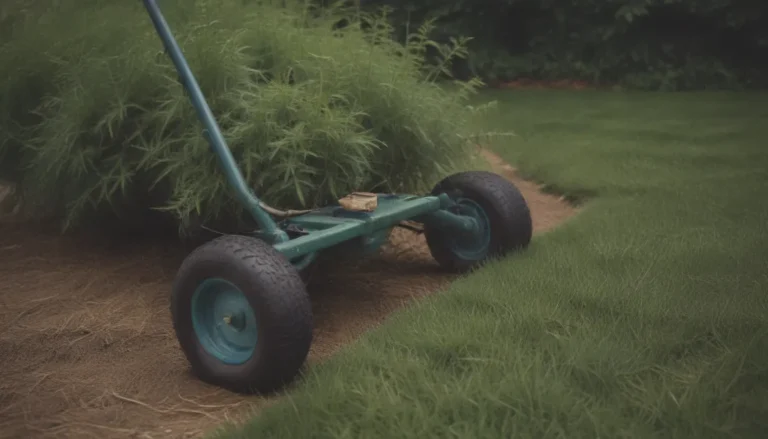A Comprehensive Guide on Growing and Caring for Coconut Palm Indoors

Are you dreaming of bringing a touch of the tropics into your home? Look no further than the beautiful and iconic coconut palm (Cocos nucifera). With its tall, gray-brown trunk, lush green fronds, and, of course, coconuts, this plant exudes a sense of relaxation and paradise. But can you successfully grow a coconut palm indoors? The answer is yes, with the right care and attention.
The Beauty of Coconut Palm
The coconut palm is a stunning plant that adds a touch of exotic beauty to any space. But before diving into the intricacies of growing and caring for this tropical gem indoors, let’s explore some fascinating facts about the coconut palm:
- The coconut palm is native to islands in the Western Pacific region, where it thrives in warm, humid climates.
- Coconut palms are known for their moderate growth rate, reaching full coconut production outdoors in 15 to 20 years.
- While indoor coconut palms may not produce fruit, they can still bring a touch of the tropics into your home.
Can You Grow Coconut Palm Inside?
Growing a coconut palm indoors can be a rewarding experience, but it does require some effort to recreate its natural habitat. Here are a few key points to consider when deciding to bring a coconut palm into your home:
- Coconut palms thrive in warm, humid environments with lots of sunlight. Provide ample sunlight, warmth, and humidity for your indoor palm.
- Regular fertilization, repotting, and occasional pruning are essential for the health and growth of your coconut palm.
- Consider moving your palm outdoors during warmer months to allow it to bask in the sun and fresh air.
How to Grow Coconut Palm Indoors
Caring for a coconut palm indoors requires attention to its sunlight, temperature, watering, fertilization, and maintenance needs. Here are some tips to help your coconut palm thrive in an indoor setting:
Sunlight
Ensure your coconut palm receives at least six hours of direct sunlight daily to mimic its natural habitat. Consider adjusting its position throughout the day to maximize sun exposure.
Artificial Light
In fall and winter, provide additional light with a grow lamp or other artificial light source to compensate for decreased sunlight.
Temperature and Humidity
Maintain temperatures above 70 degrees Fahrenheit and humidity levels to create a tropical environment for your coconut palm. Use a humidifier or mist the plant regularly to keep it moist.
Watering
Keep the soil consistently moist but not waterlogged by watering once or twice a week with warm water. Avoid root rot by ensuring proper drainage in the container.
Fertilizer
Use a liquid fertilizer year-round to supplement essential nutrients like phosphorus, nitrogen, manganese, and boron. Choose a palm tree-specific fertilizer and follow the recommended application guidelines.
Pruning and Maintenance
Trim decaying or dead leaves as needed to maintain the health and appearance of your coconut palm. Use sharp tools to remove unwanted foliage without damaging the plant.
Container and Size
Select a sturdy pot with good drainage to accommodate the growing size of your coconut palm. Start with a 3-gallon container and upgrade to a larger pot (at least 10 gallons) as the plant expands.
Potting Soil and Drainage
Choose a well-draining palm soil mix for optimal growth and moisture retention. Add a layer of mulch to the soil surface to help regulate moisture levels.
Potting and Repotting Coconut Palm
Pot sprouted coconuts in a 3-gallon container initially and transplant to a larger pot once the roots outgrow the current container. Use a clay pot with adequate drainage to prevent waterlogging.
Moving Coconut Palm Outdoors for the Summer
Give your coconut palm a taste of the outdoors during warm months to promote growth and vitality. Monitor temperatures and bring the plant indoors when temperatures drop below 64 degrees Fahrenheit to avoid damage.
Pest Control
Keep an eye out for common pests like mealybugs and spider mites on your coconut palm’s leaves. Treat infestations with insecticidal soap to protect the plant from damage.
Harvesting
While indoor coconut palms may not bear fruit, if you happen to get coconuts, harvest them by cutting them at the stem with a sharp knife for a tropical treat.
In conclusion, growing and caring for a coconut palm indoors can be a rewarding experience if you provide the right conditions and attention to detail. With proper sunlight, temperature, watering, fertilization, and maintenance, your indoor coconut palm can thrive and bring a touch of the tropics into your home. So go ahead, introduce a slice of paradise into your living space with a beautiful coconut palm!





